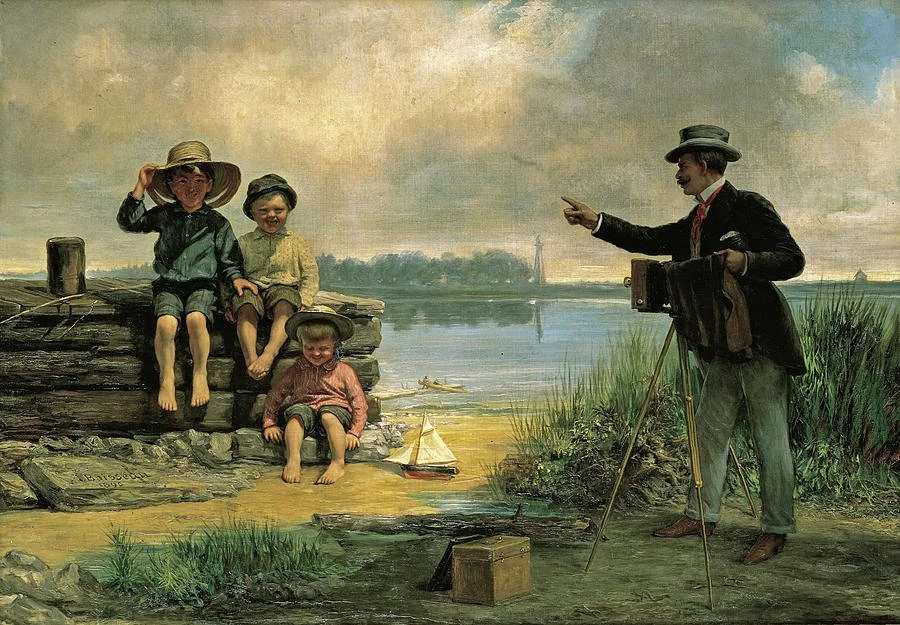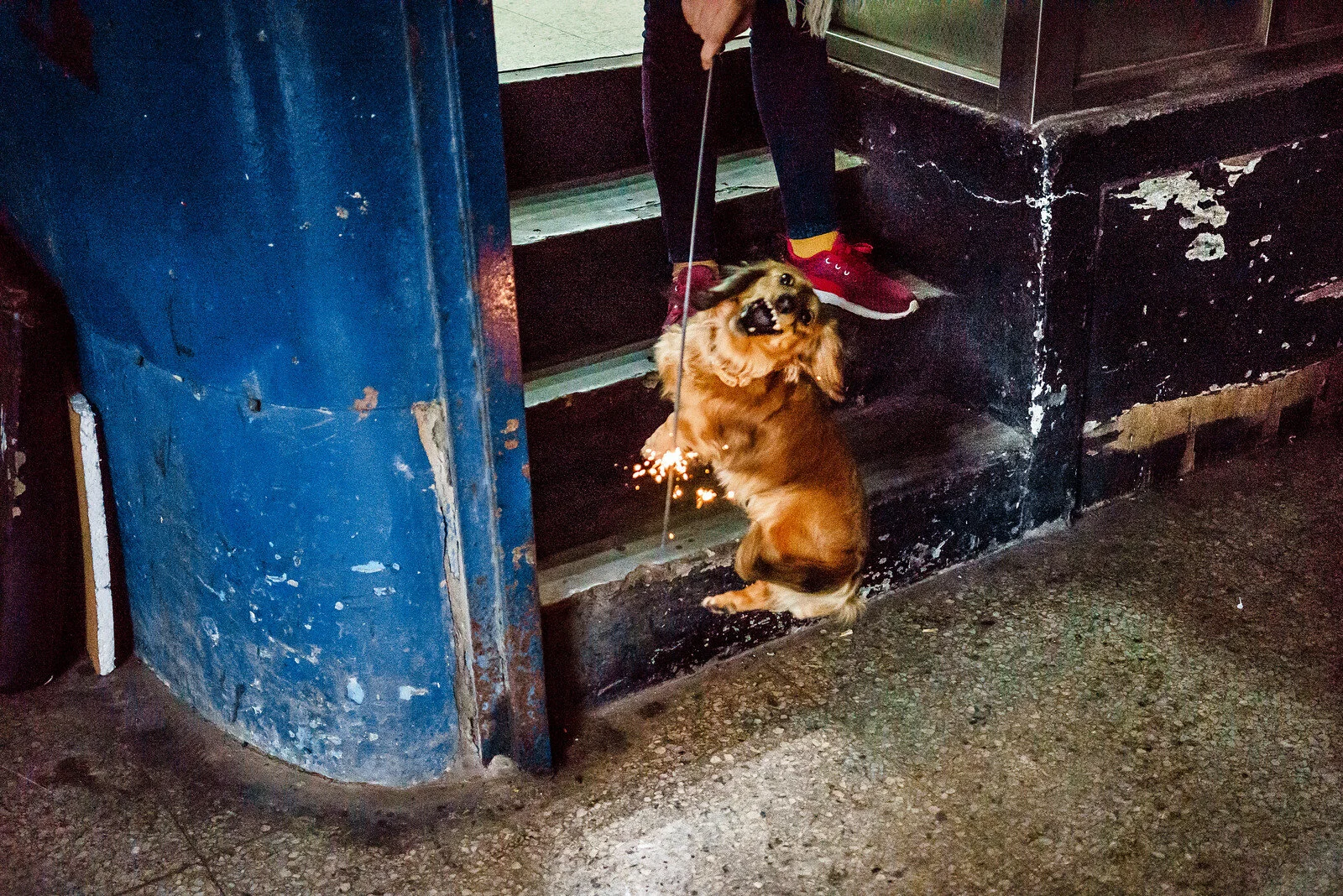Who are You?
Hello, my name is Andy and I work part time at my local hospital as a clinical educator. I come home to a lovely wife, two beautiful children and a whippet called Woody. Photographically, I’ve been obsessed for the past 8 years and was over the moon to release my first book, Incidental View, published by Camera Infinita last year.
What was the trigger, or inspiration, that led to your taking up photography?
My wife bought me a Panasonic LX5 as a wedding present in 2010. After taking three or four sunsets and a couple of flower macros I quickly found that I was drawn to shabby urban landscapes.
What do you hope to communicate or describe with your work?
The human condition, emotion, humour, birth, life, death… The finer points of the narrative are left for the viewer to fill in, as ambiguity is also an intentional piece of the puzzle. I hope to convey a surreal sense of wonderment at the world around us, but with a niggling disquiet forcing it’s way into each frame.
Has your relationship with photography changed over time, and if so how?
It has been many things to me over the 8 years I’ve been shooting. Photography has aways had a role as an escape route I can rely on, but in recent times it feels like it has, on occasion, saved me from the brink of my own sanity. It pleases me to say that the choppy seas are beginning to calm now, but I have come out the other side with an even deeper and more respectful relationship with photography.
Select 3-5 (or some number we agree is appropriate) of your photos and talk about how they came to be and how they reflect your working methods.
Dolus D'Oléron 1
I rely on luck, a comfy pair of shoes and a very forgiving wife to make my work… my modus operandi is usually to disappear from family life for hours on end, following my nose and documenting things of interest on the way. I often come back with nothing of note, but I’m fine with that; if it were easy to make photographs that appeal to me, I’d get bored of the process very quickly. For Dolus D’Oléron 1, I’d been out all morning with very little to show for it and on the drive back to our holiday home, I caught this scene out of the corner of my eye. I was fortunate that nothing was behind me as I slammed the breaks on in excitement.
The next image, Billy Bob’s 2, is a shot I took when going for a meal with family and friends.
Billy Bob's 2
When pulling into the carpark I noticed the fantastical scene of a large shed (at least I think that’s what it was!) all wrapped up in plastic sheeting. I had to capture this surrealism, however my framing was hampered as there was a myriad of farm yard machinery and hay bales behind the enshrouded shed. To clarify the composition, I moved in closer and crouched down in order to conceal the distractions behind. Finally I waited (and waited) for the sun to peak out from behind the clouds; patience is a virtue after all! It turns out to get the minimalist composition I wanted, I also had to stand right in the middle of a patch of squelchy mud and go to dinner with soggy feet!
Great Yarmouth 3
I’ve mentioned that I rely heavily on luck, and whilst this is true, I also believe we can create our own luck a little. By shooting at every possible opportunity and only showing our very best photographs, I think our chances of making compelling work is maximised. For Great Yarmouth 3, good old fashionedluck was definitely on my side. I was composing the sand dune with no knowledge of the fishing boat that was about to enter the frame. As I saw it moving along the horizon, at first I was frustrated as I thought I’d have to wait until it passed, then the lightbulb lit up in my head and I began to grin from ear to ear. Without the alluring streak of lights the image would probably be useable but ultimately forgettable… but with them, it is one of my favourite images that I’ve ever taken. A moment of minimalist serendipity.
A45
Another photograph that was the product of right place, right time is A45. I fly out the door at the first hint of fog for two reasons; the first is subject separation and second is the claustrophobic undertone it adds to the image. Here I was, firing off a few frames under one of the flyovers in Northampton, when the fog began to lift as the morning sun forced its way through. The effect was both magical and fleeting, for two minutes later the fog was gone… but I had managed to capture one of my most well received images ever.
Weston Favell 8
The last image I want to talk about, Weston Favell 8, illustrates one of the things I really love about photography, i.e. the capability to record a scene in an unfamiliar way to that of the human eye. In reality this area was very dark, but as the camera exposes for middle grey, it attempted to make it daytime. A little overexposure in post-production (as I almost always do by half a stop or so) and we have something that is far more appealing (to me) than how my brain originally processed the space. Tinkering with long exposures, flashguns or whatever to create new realities is something that provides endless creative fodder for me. I think this shot also represents a turning point in how I construct a photograph, as prior to this, I would tend to approach subject-matter with a highly reductive, minimalist approach… as can be seen in Billy Bob’s 2. This photo kick-started the desire to consciously add more elements within the frame and in doing so, hopefully generate more complex, enduring narratives.
website: andyfelthamphotography.com
instagram: https://www.instagram.com/andyfelthamphotography/





